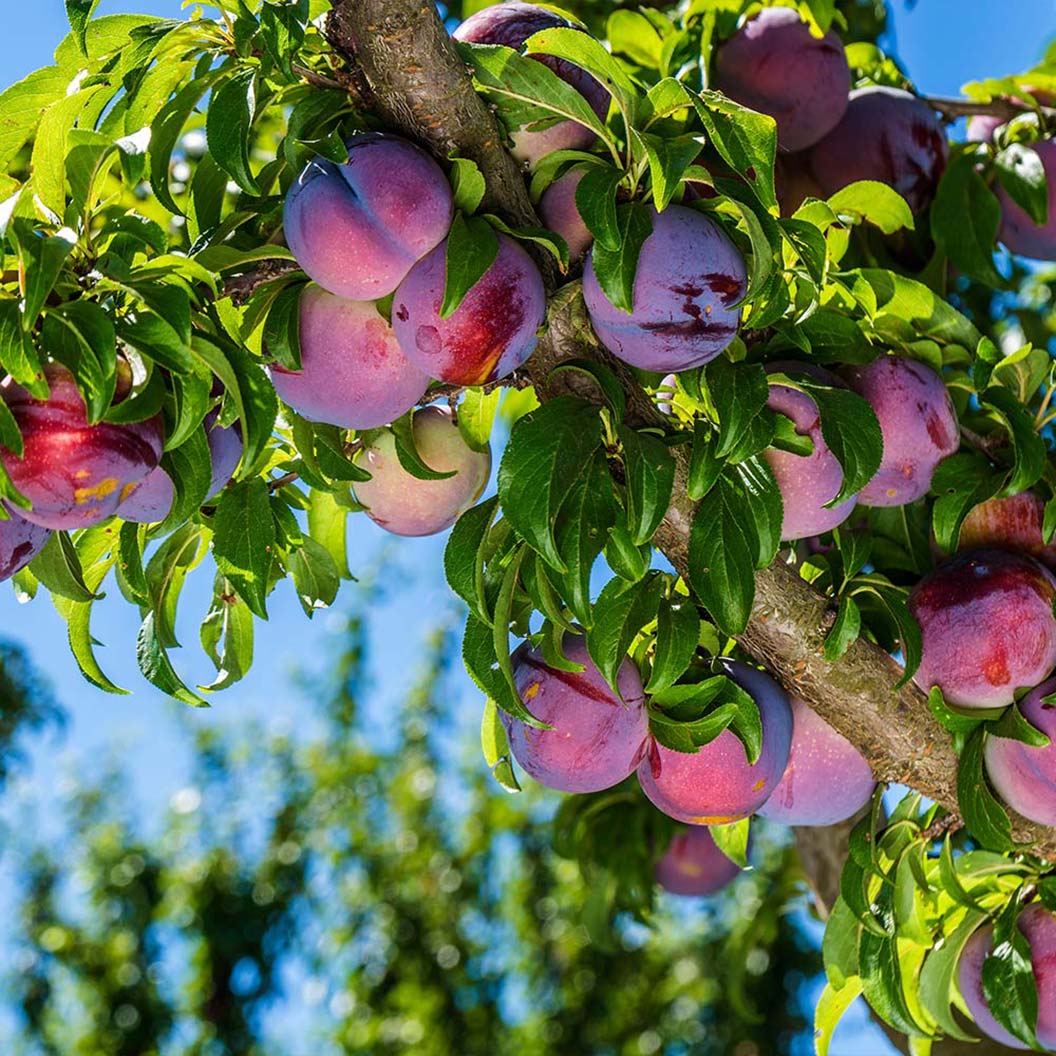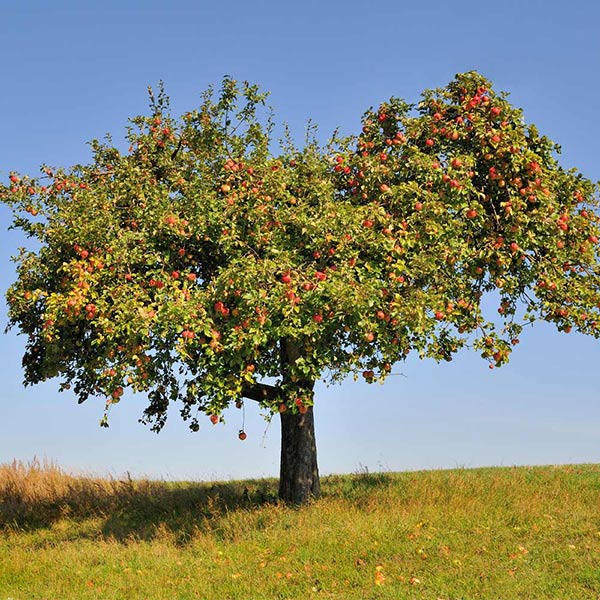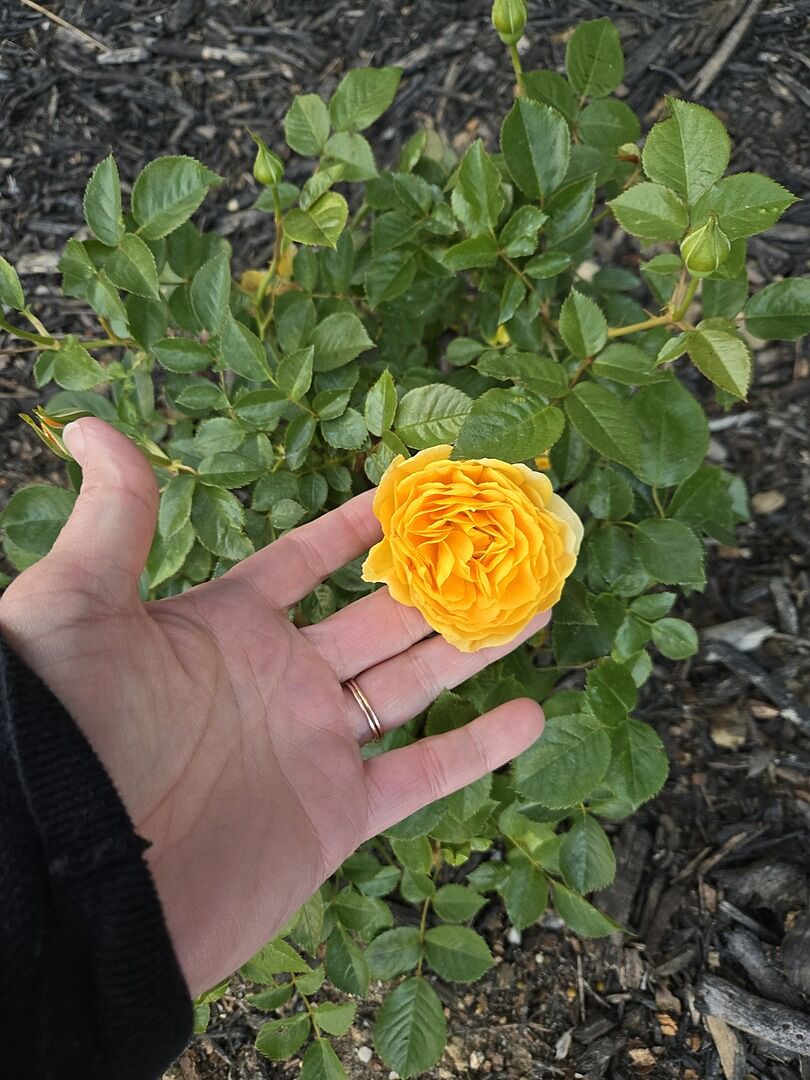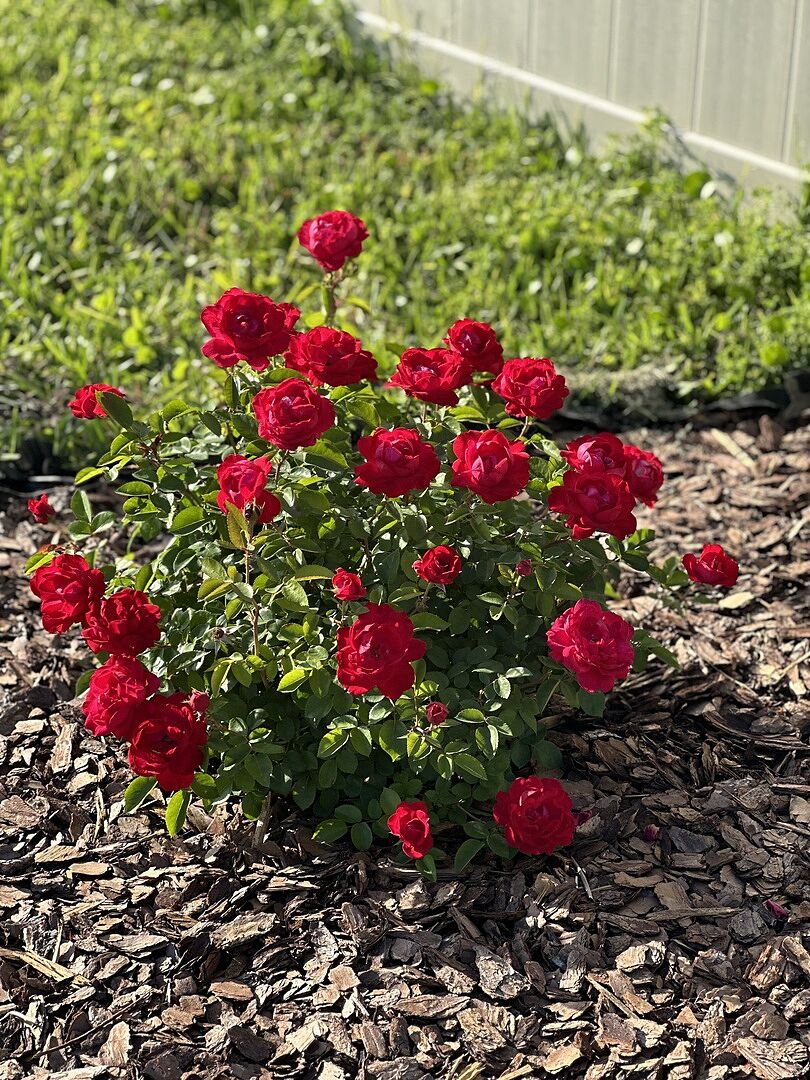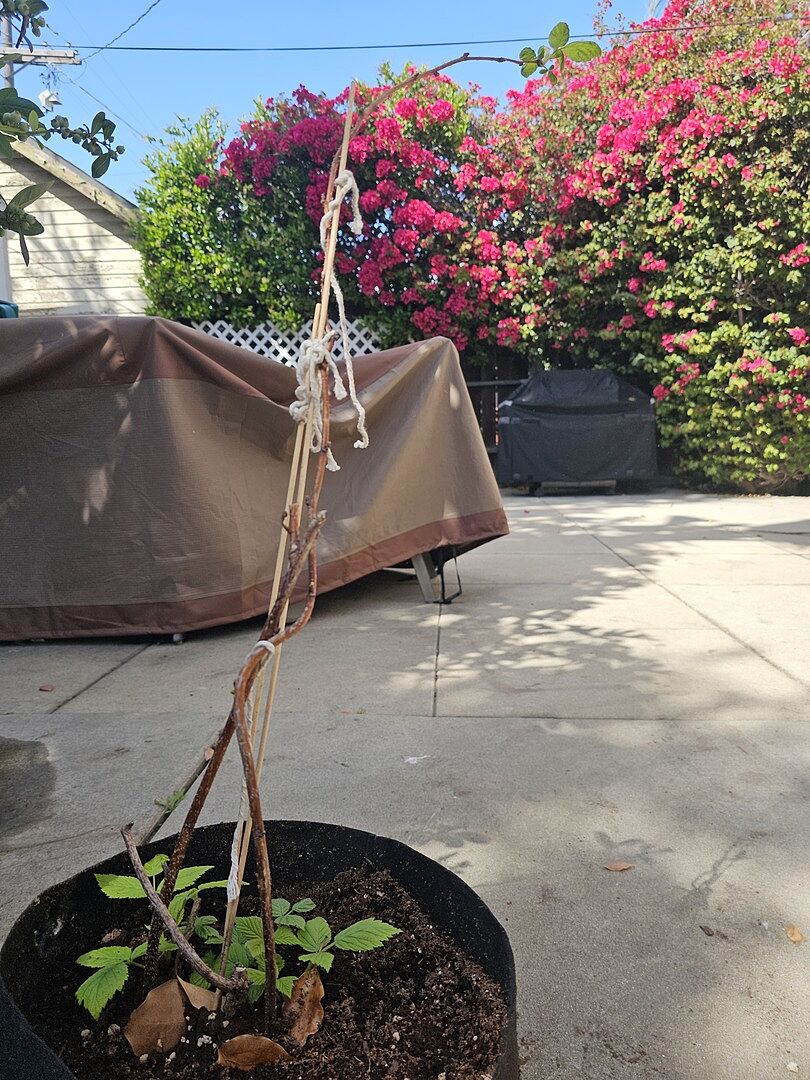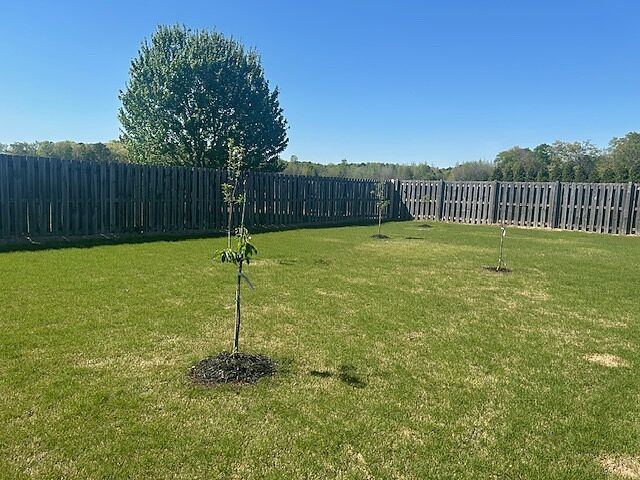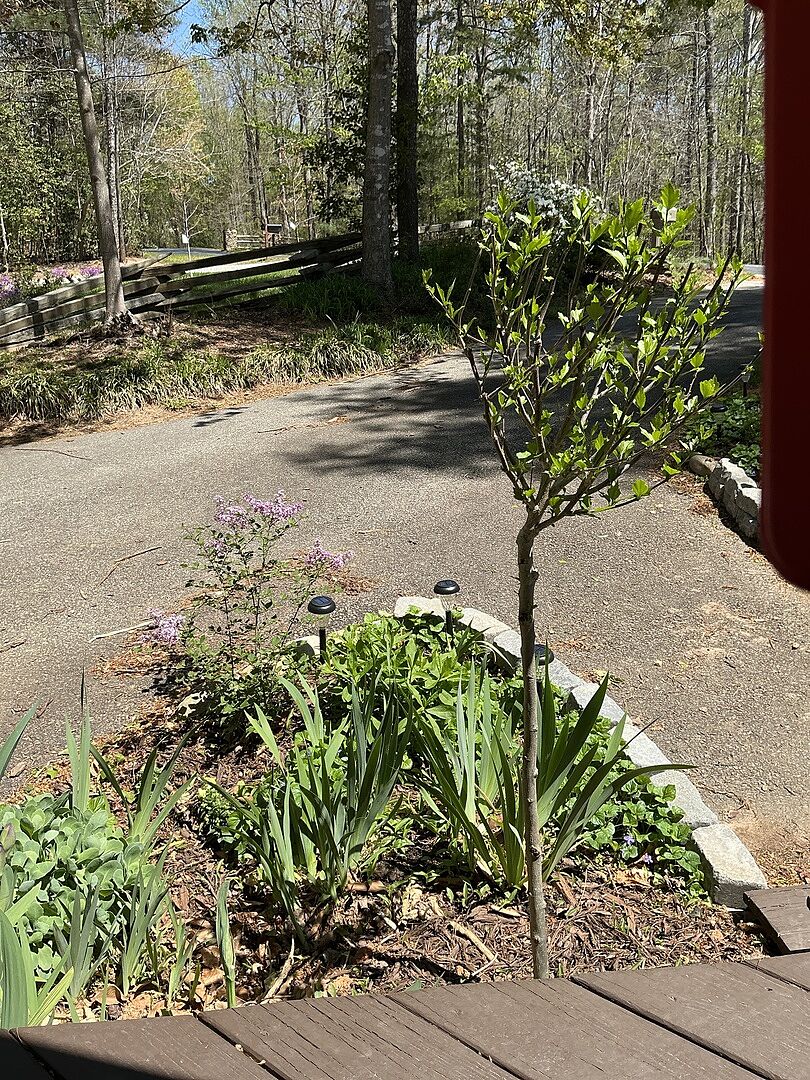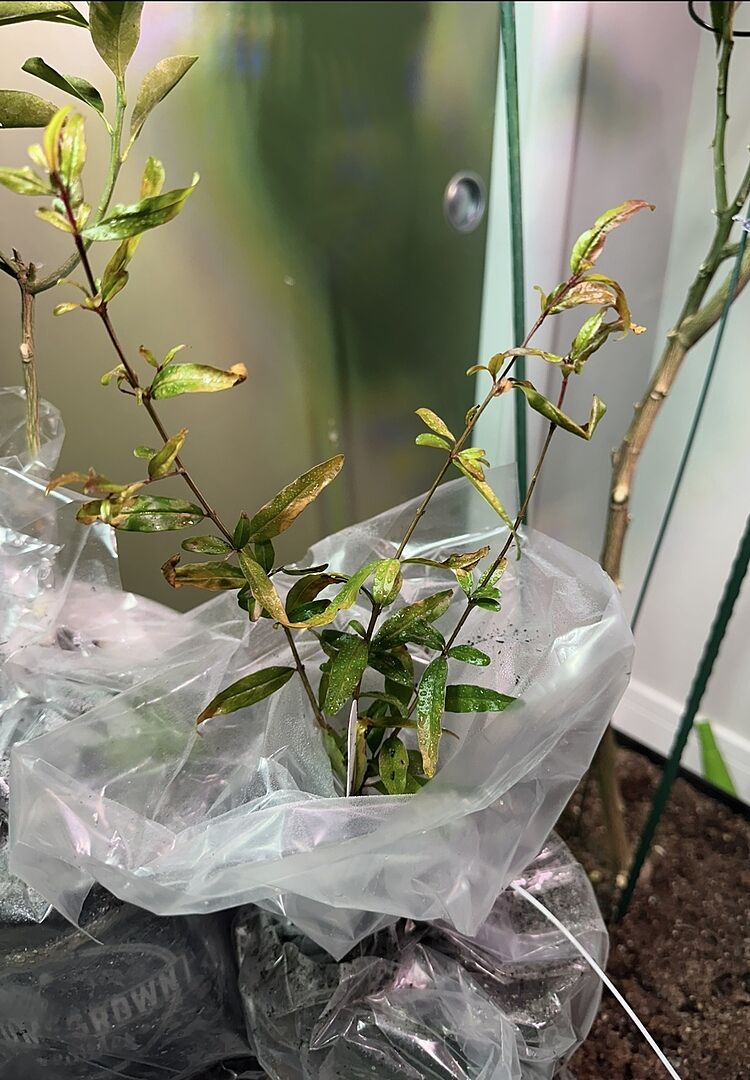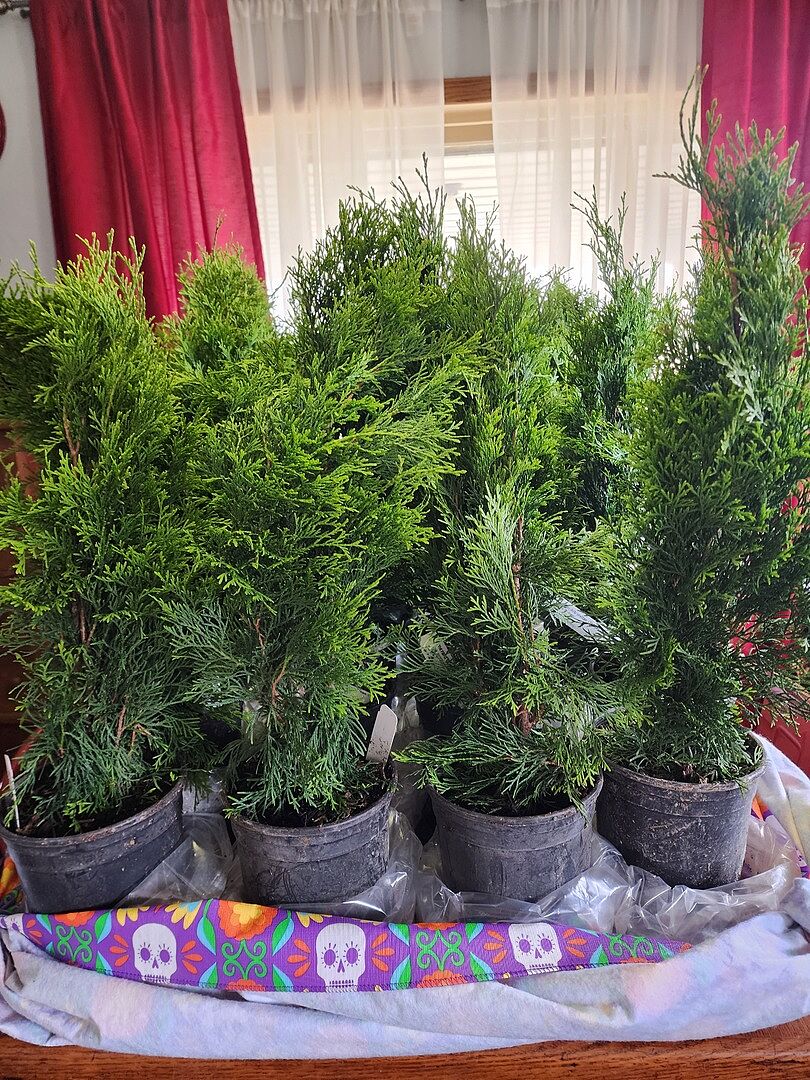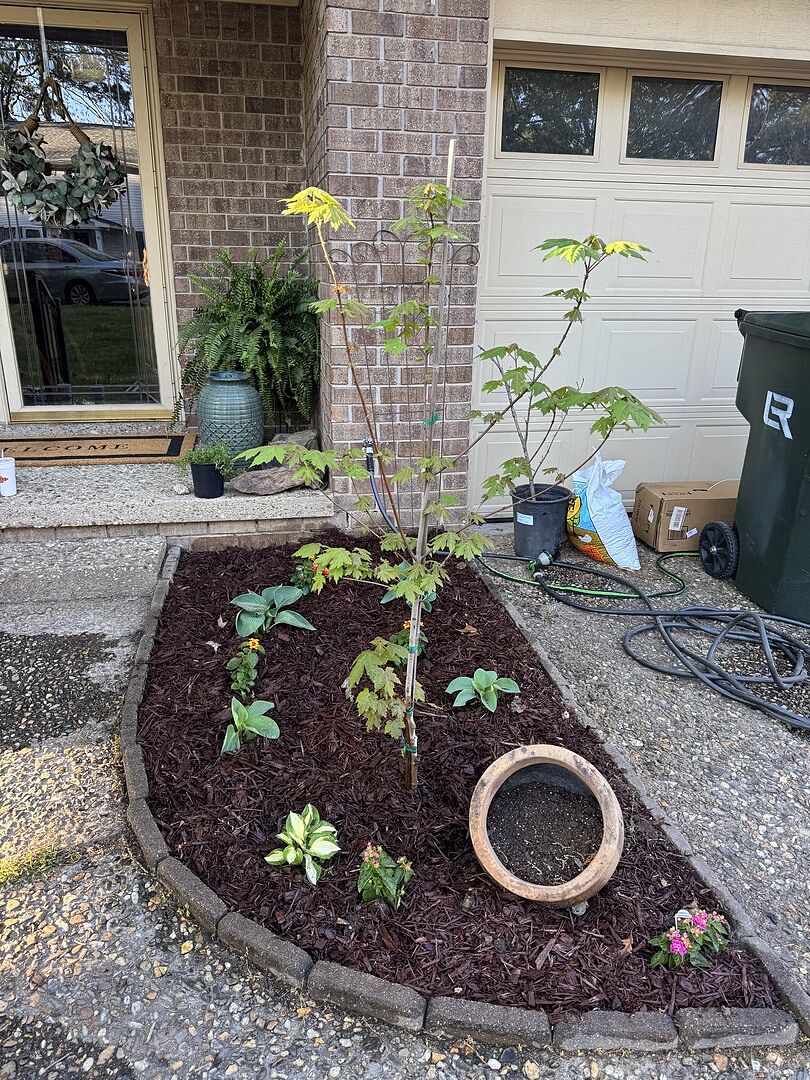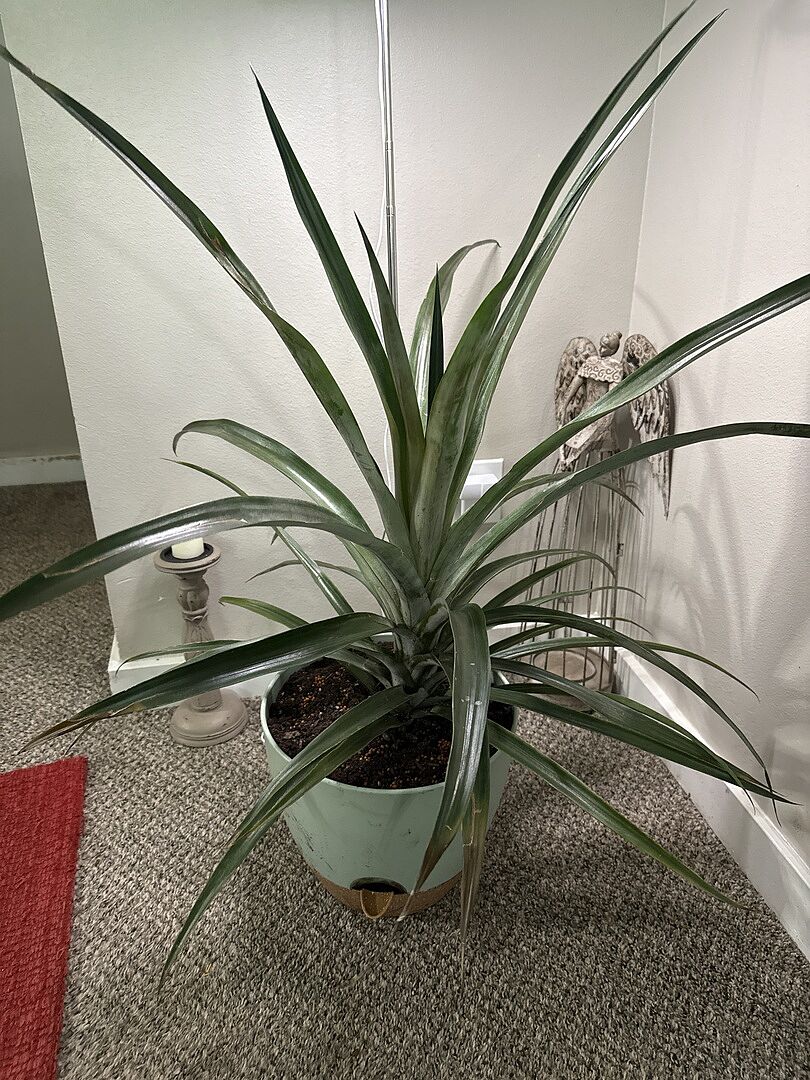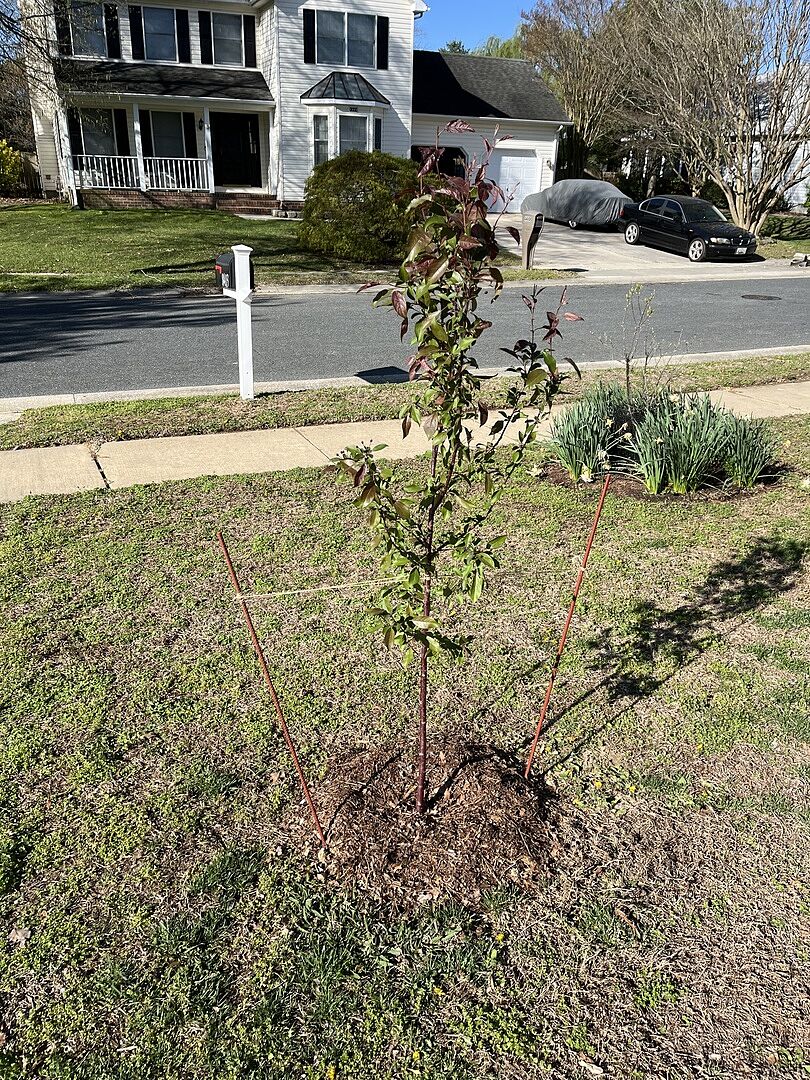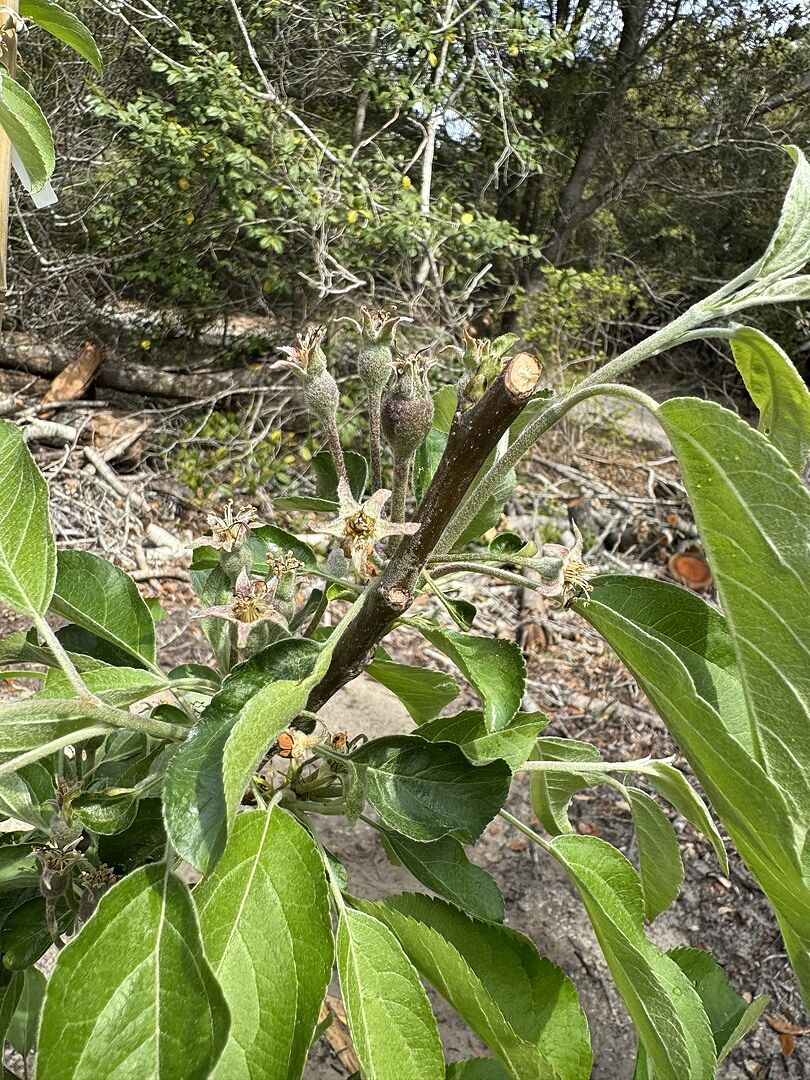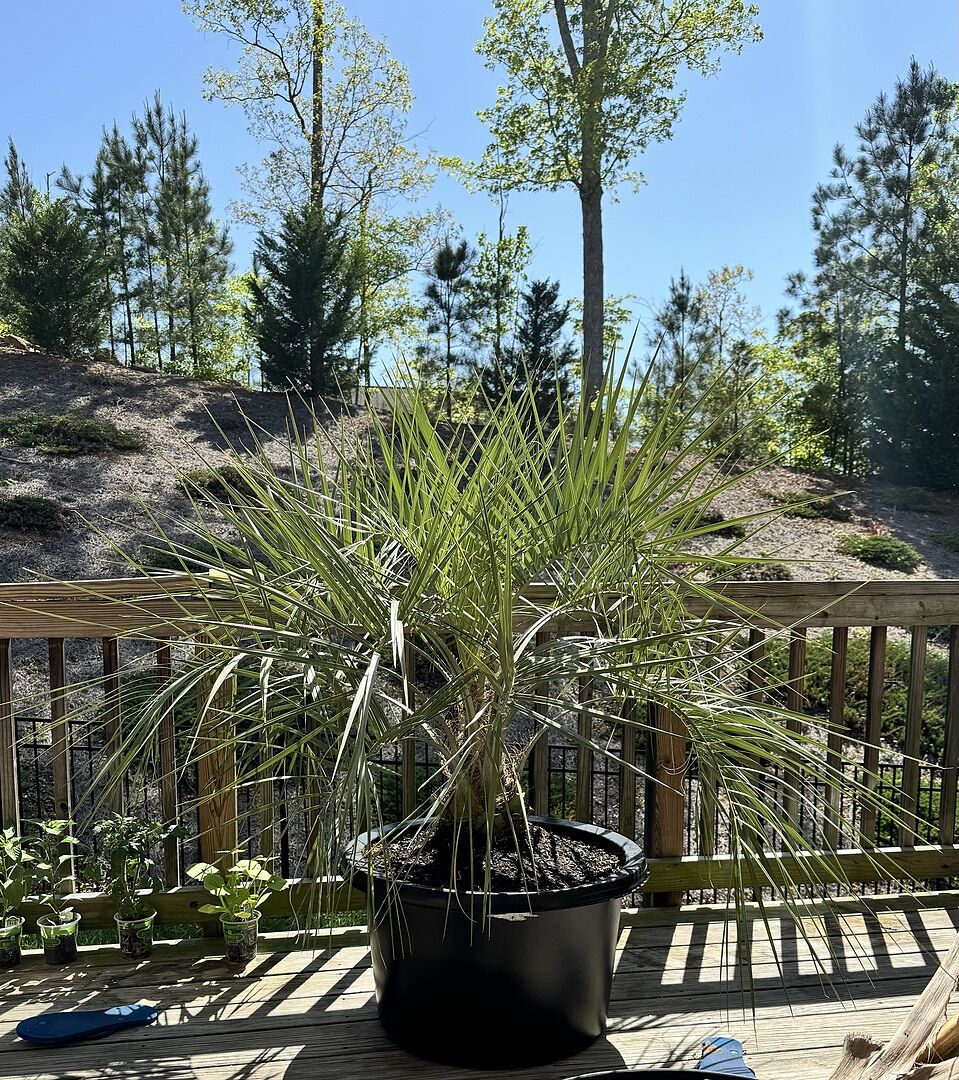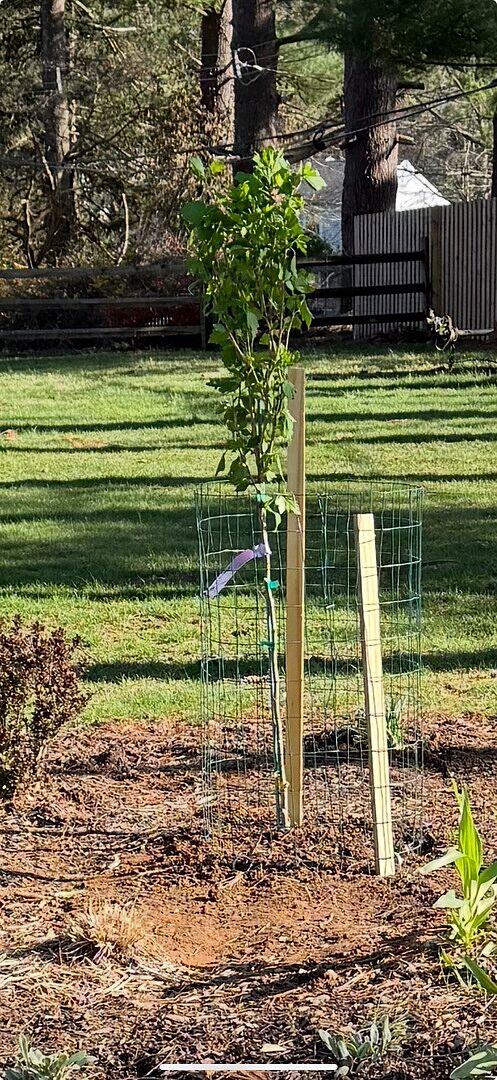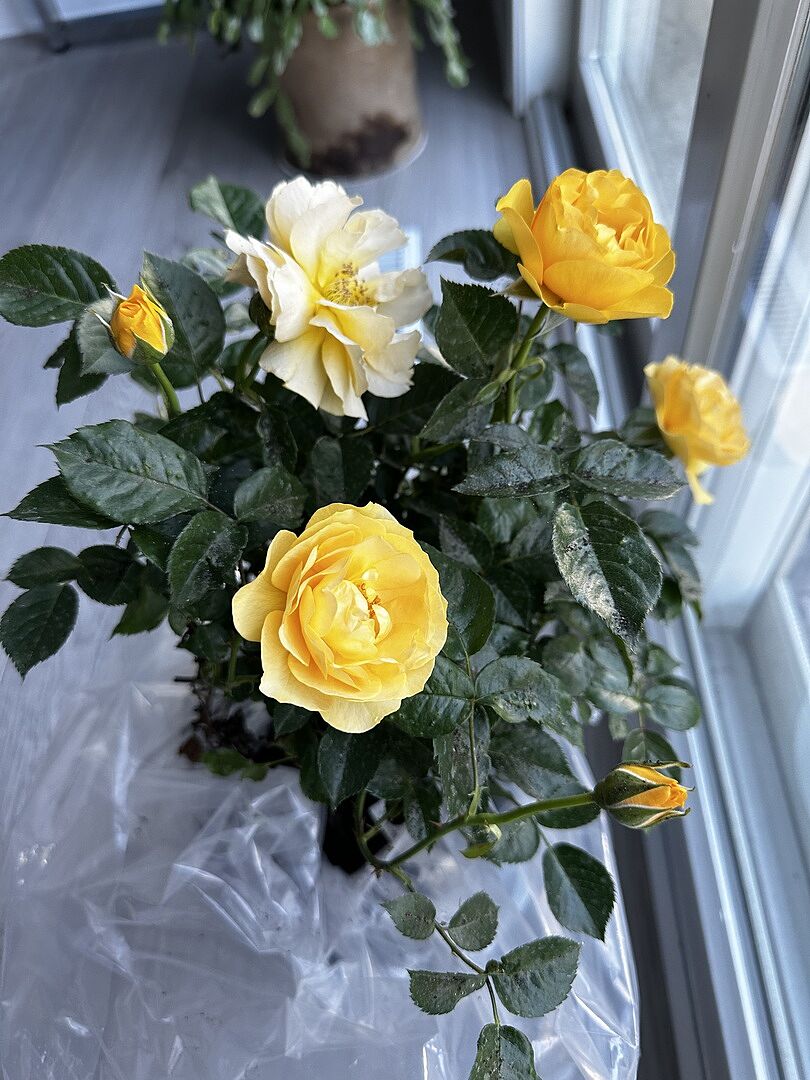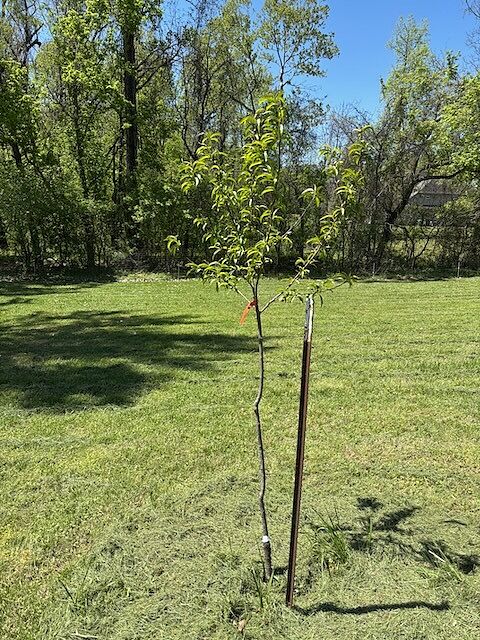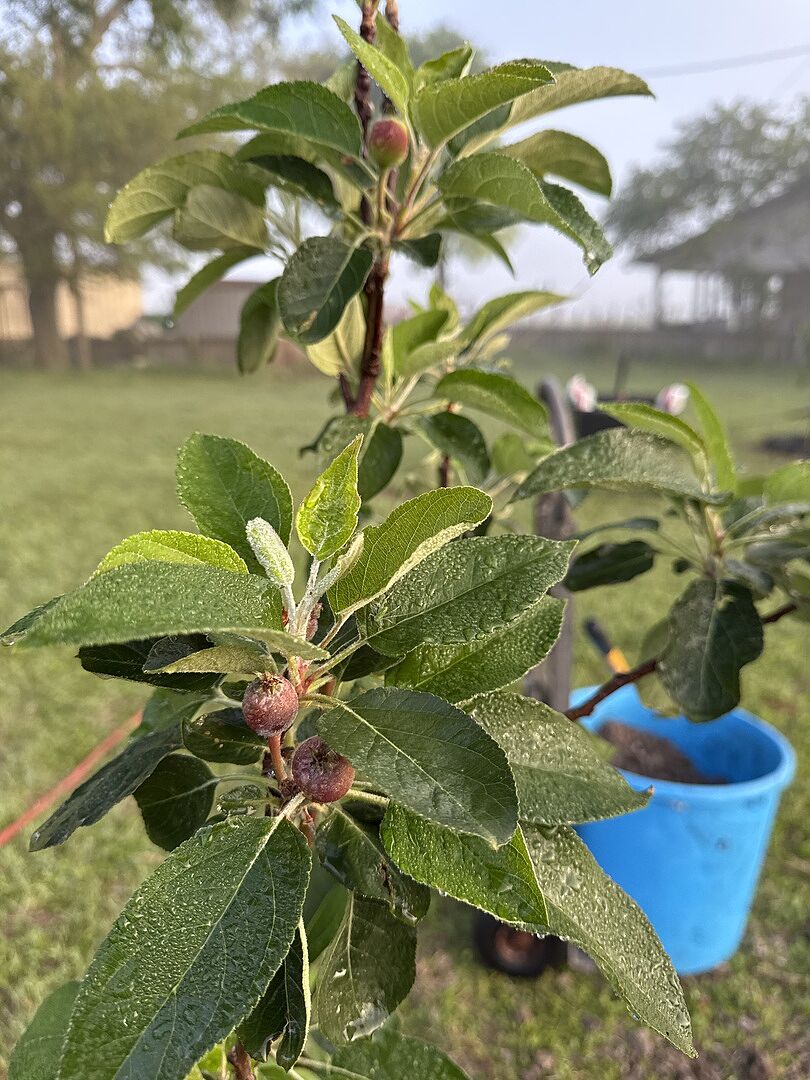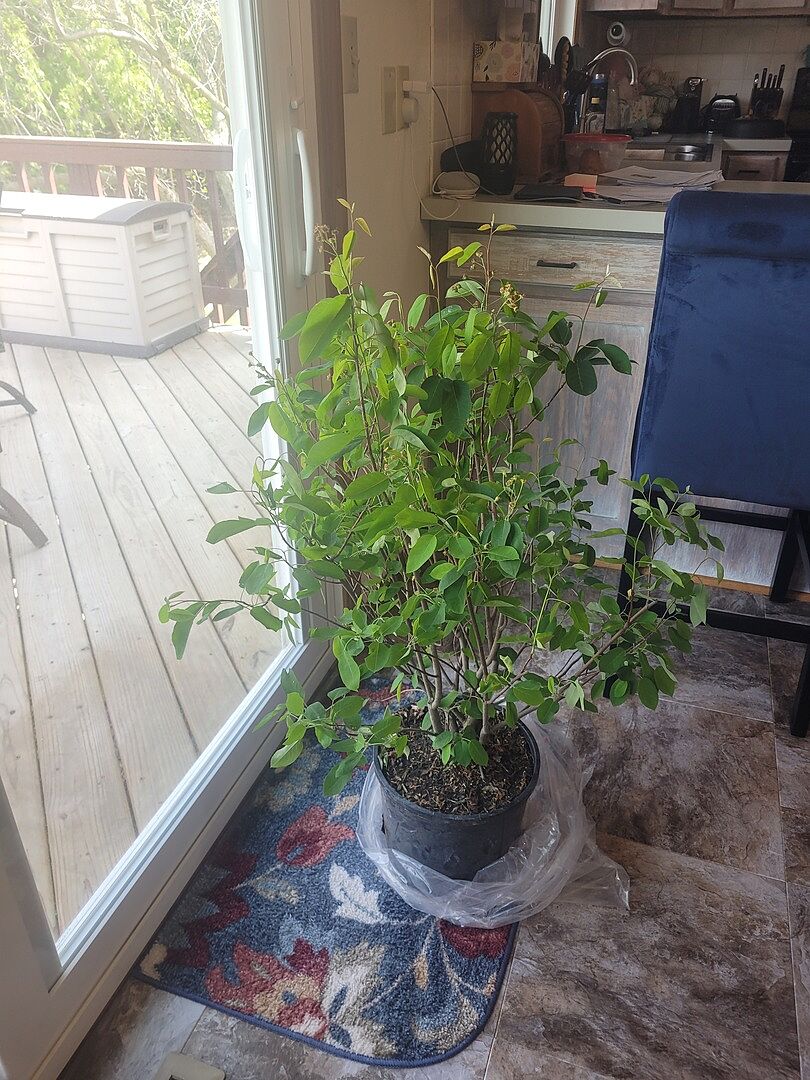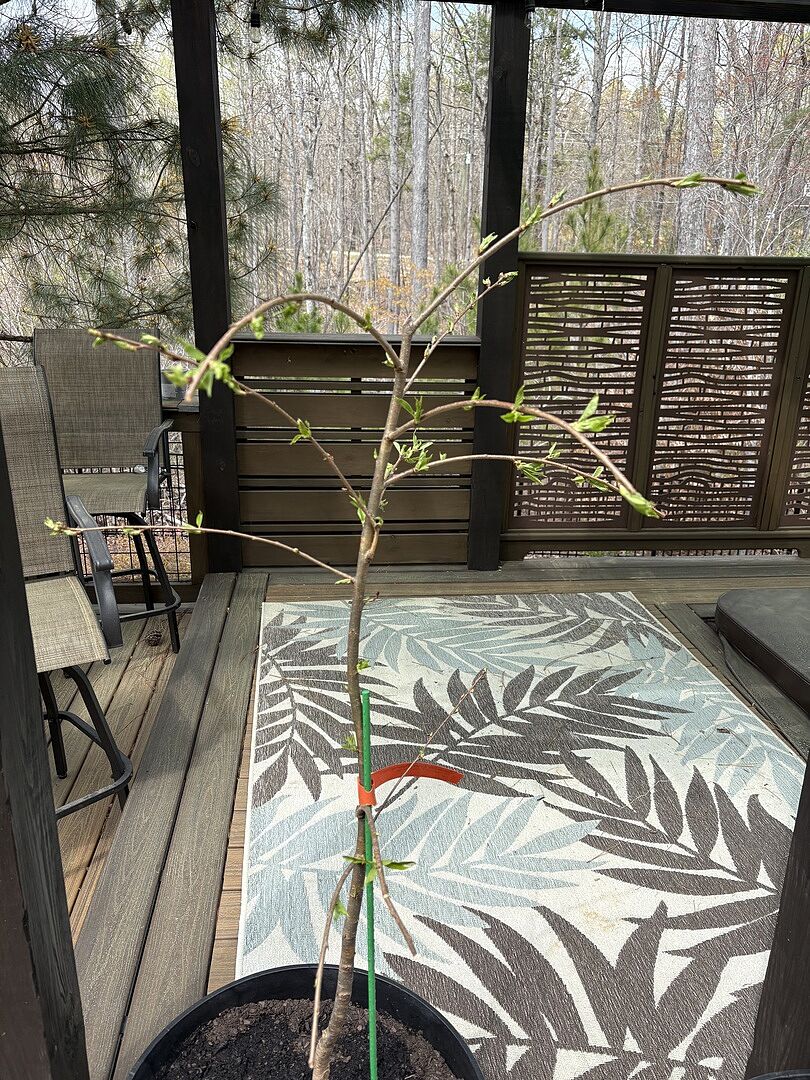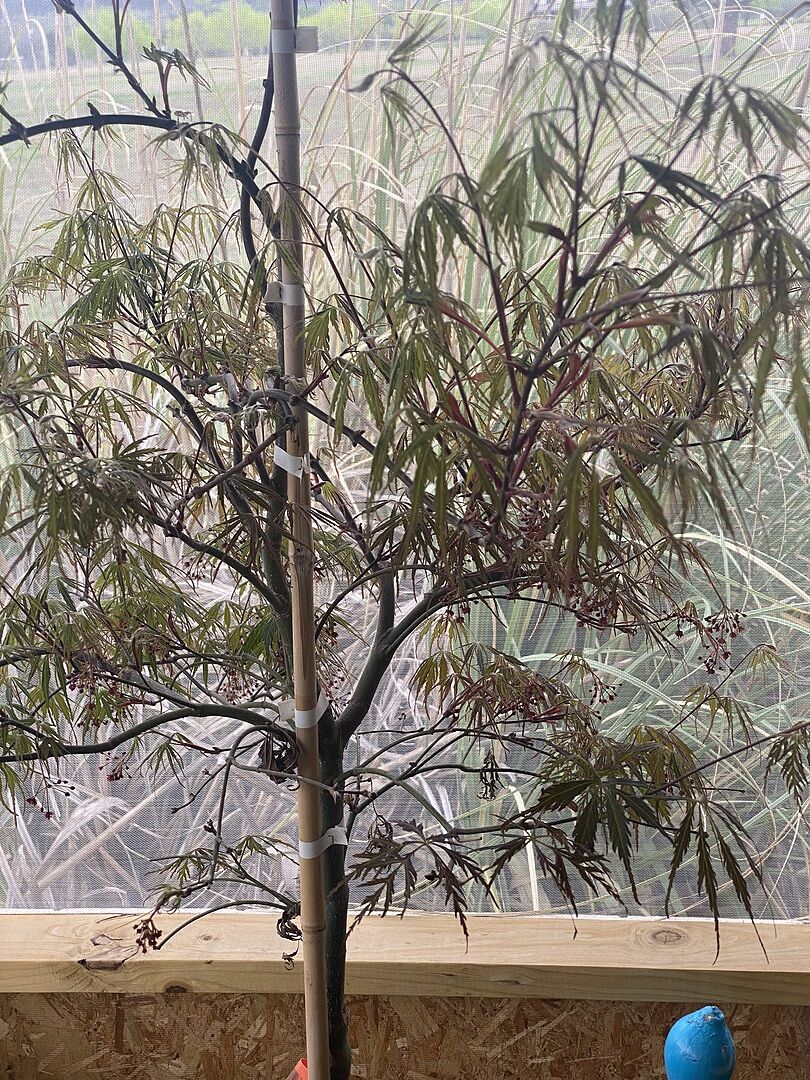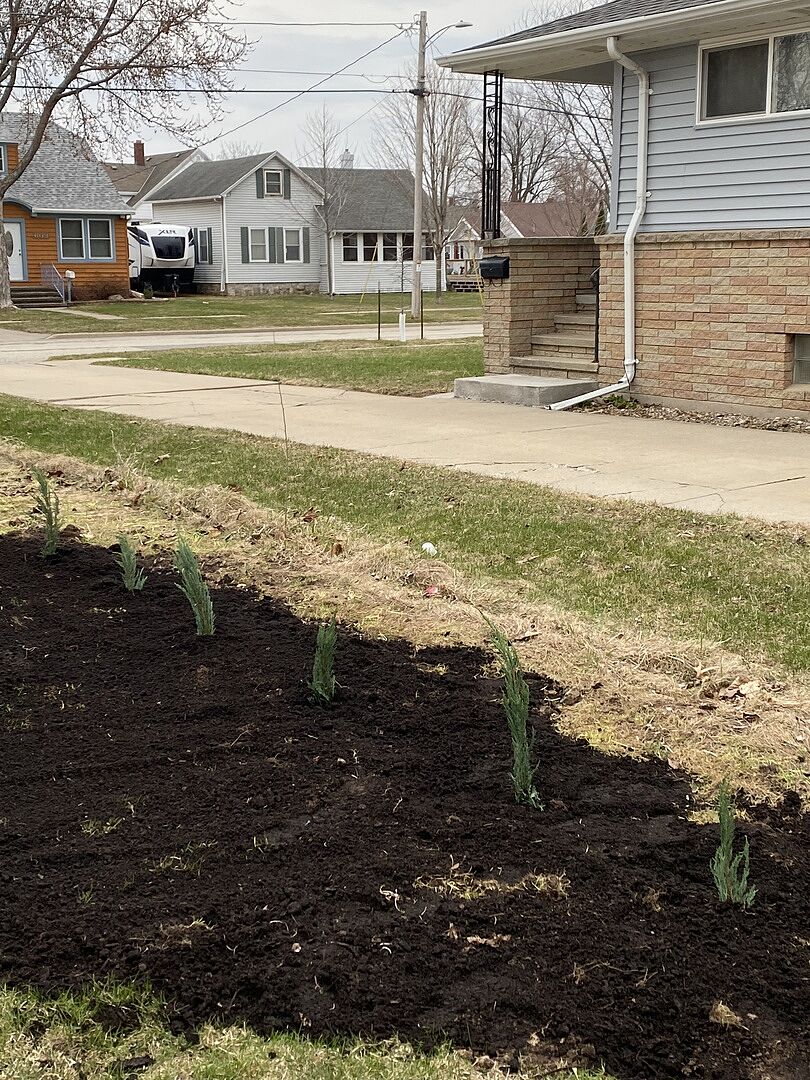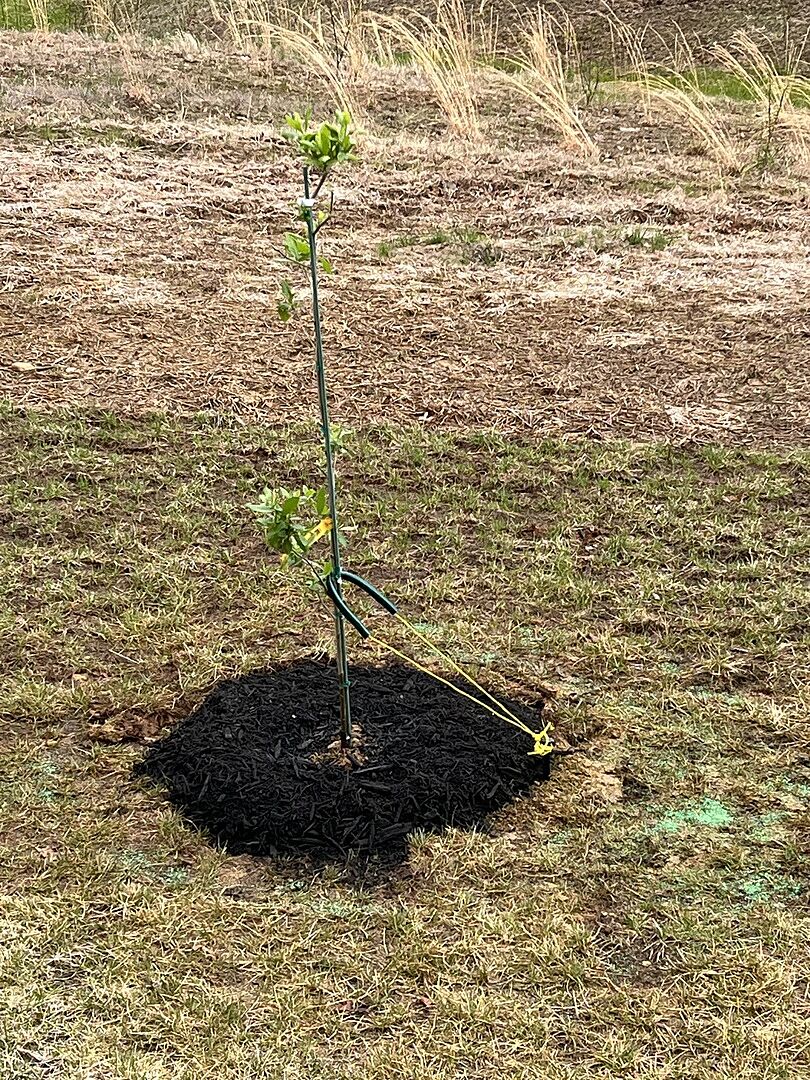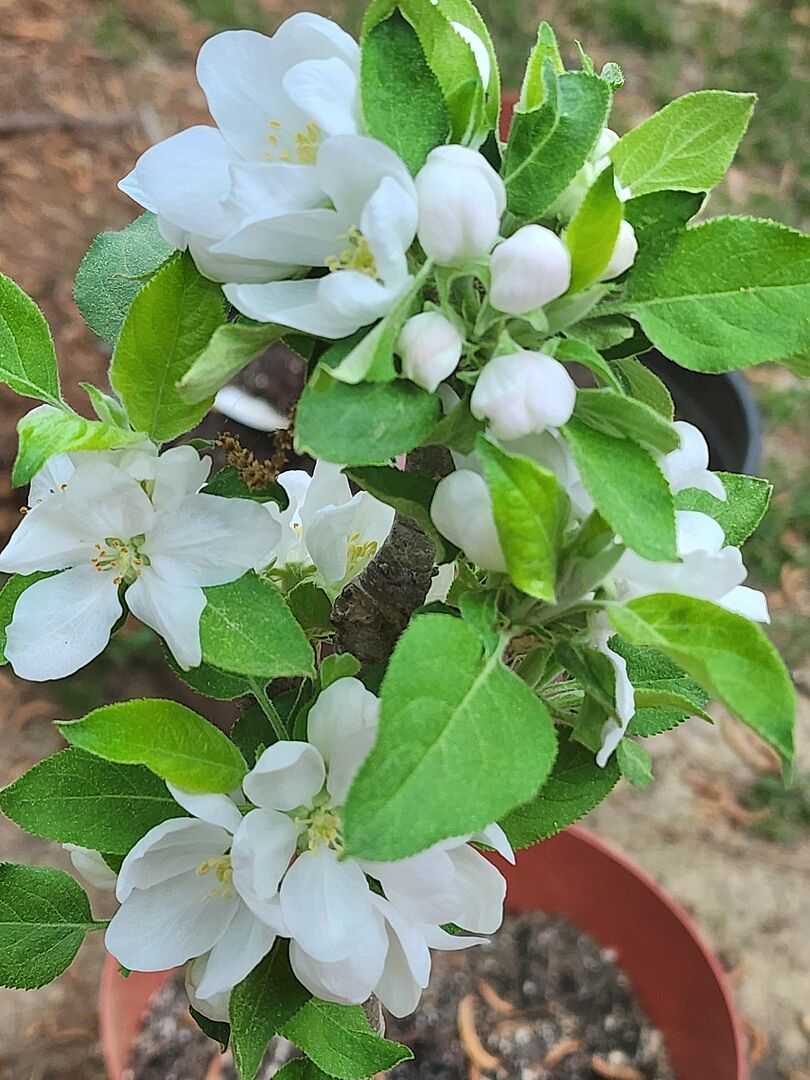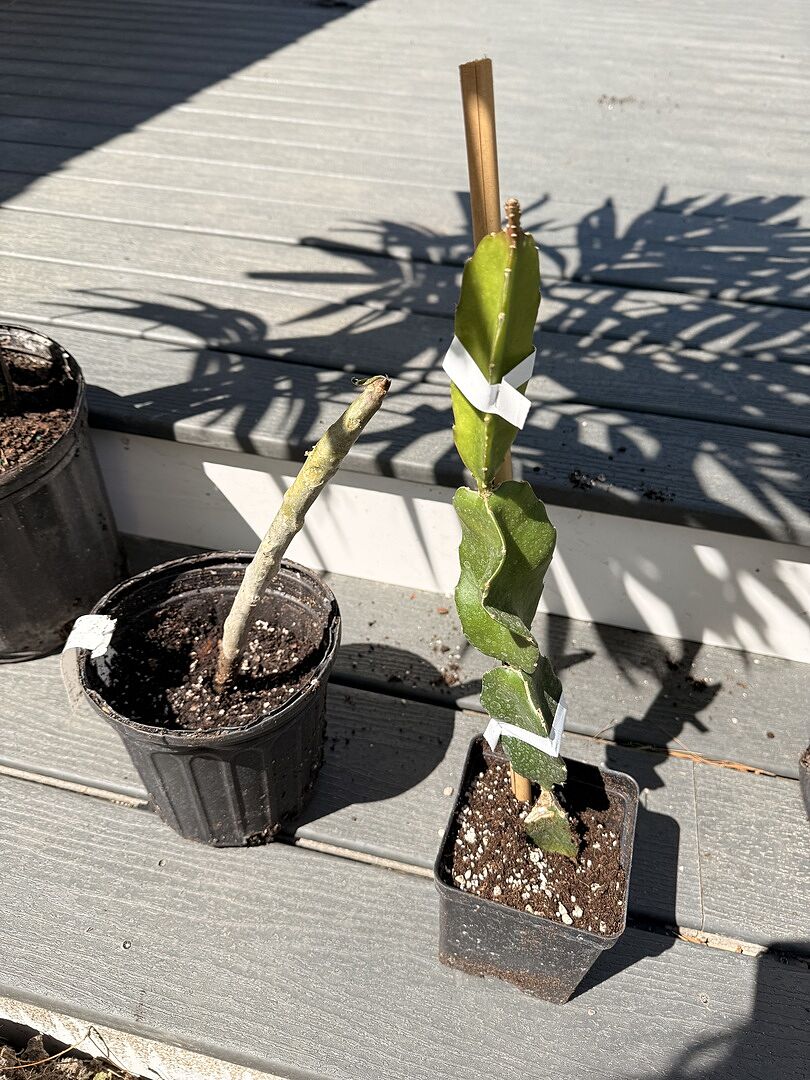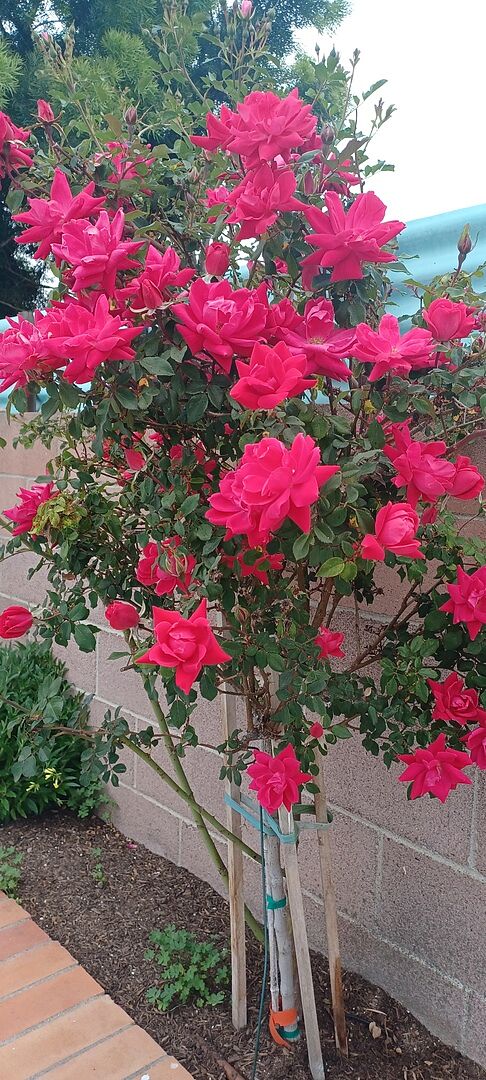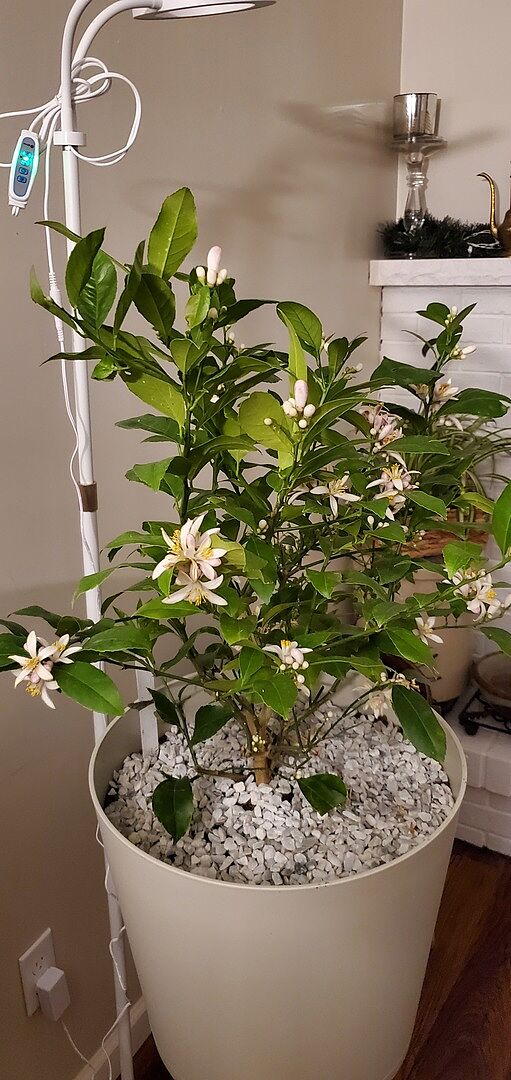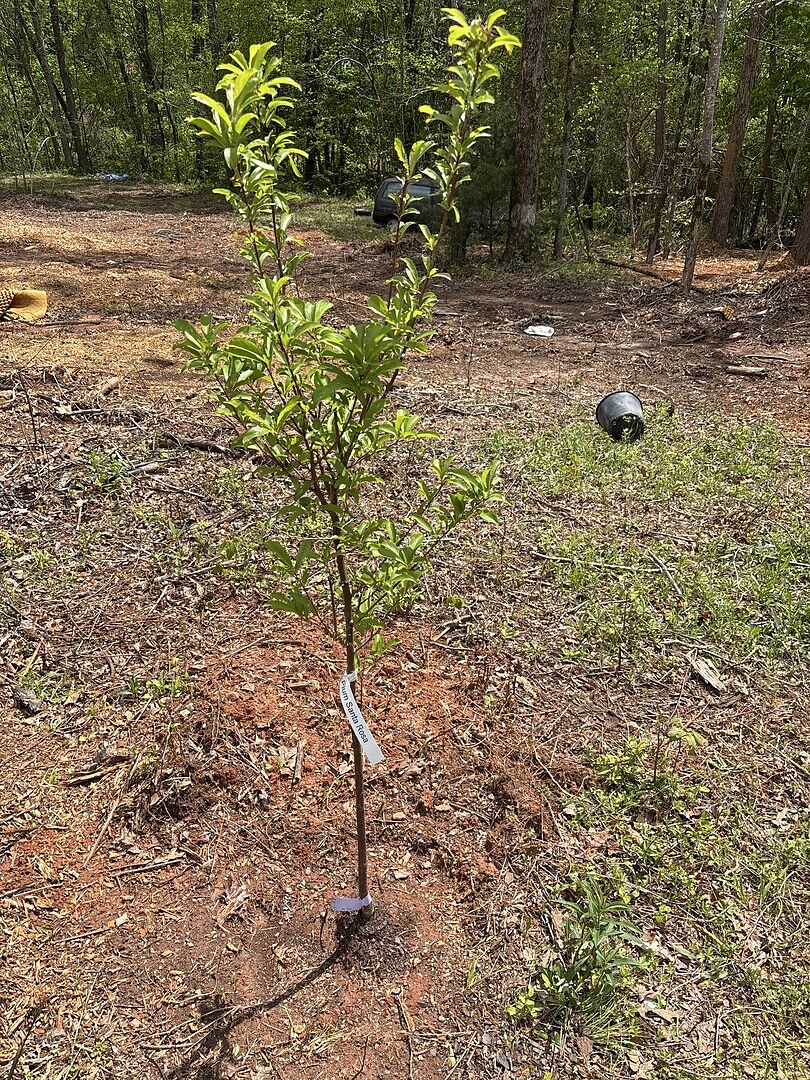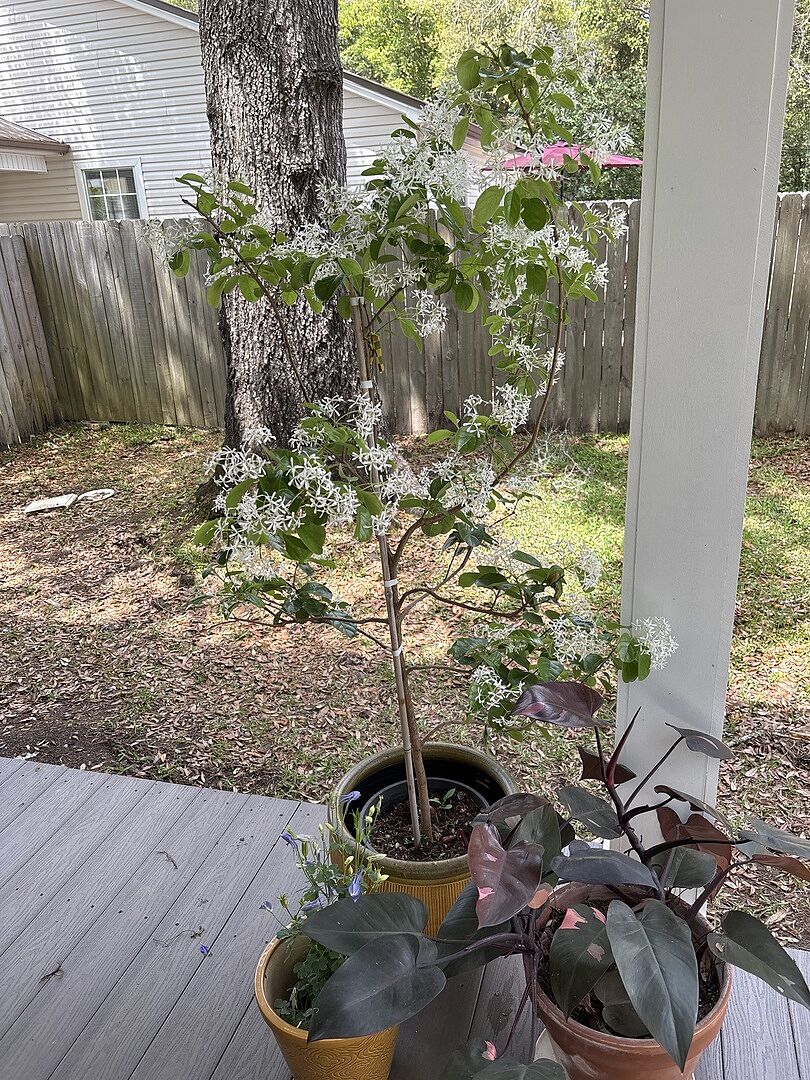Columnar Apple Tree Planting & Care

Last updated: Jul 07 2022

As the old saying goes: An apple a day keeps the doctor away—so, it’s no wonder people love growing their own! But if you have limited (or no) yard space, how can you enjoy your own personal orchard?
Columnar apple trees are a unique type of this popular fruit tree. They grow narrowly and upright, becoming especially tall and thin in comparison to other apple trees.
The columnar apple tree is a great tree for smaller spaces, and they can even be grown in containers. Want an apple orchard on your patio? The columnar apple tree will be your best bet. Let’s take a look at these columnar fruit trees and the best way to grow and care for them.
About the Columnar Apple Tree
Did you know that apples are one of the most popular fruits on earth? People love them because they come in a vast array of flavors, colors, and sizes.
Columnar apples, just like traditional apple trees, also come in many different varieties such as the Blushing Delight and North Pole. We'll get into the specific varieties later on. For now, let’s find out if one of these small apple trees is right for your space.
How tall do columnar apple trees grow?
Since there are various columnar apple trees out there, each variety's height and width can differ slightly based on the specific tree. For the most part, they reach mature heights between 8 to 10 feet, with a width of about 2 feet or less. They thrive best in growing zones 4 through 9 and in areas of full sunlight (about 6 to 8 hours each day).
Since these are fruit trees, surrounding conditions can impact growth. Certain varieties can withstand harsher temperatures of cold or hot, so be mindful of the type you choose and ensure it’s suited for your environment.
Columnar apple trees tend to perform well in southern areas, with mild winters and warm, sunny summers. Our Apple Tree Guide is a great resource to learn more about growth, conditions, and even some pollinators for this type of fruit tree.
Columnar Apple Tree Planting
Planting your columnar apple tree in full sunlight is just one way to ensure this tree will thrive. Whether you’re placing it in a container or in the ground, remember to allow it enough space to grow.
For a container, select a pot (with a drain hole) that's about twice the width of the plant's shipped container. Select a well-draining, quality potting soil mix to fill the pot. Add soil to the bottom of the pot, place your tree, and fill the pot until there is a 2-inch space from the rim to the top of the soil.
For ground placement, choose a location with well-draining soil. To help with natural drainage, you can mix potting soil or compost in with your native soil. Dig a hole twice as wide (and just as deep) as the plant's root ball. Place your columnar apple tree and backfill the dirt.
When is the best time to plant columnar apple trees?
Plant your apple trees in early spring, as this is the best time for soil to be worked. However, you may also opt to plant in the fall while the tree is dormant.
If planting in a container as opposed to your yard, you can choose any time during the growing season so long as you provide enough water for the tree.
Caring for Your Columnar Apple Tree
Like any plant, there is a certain amount of attention and care required to ensure it thrives. For fruit trees especially, you want to promote growth and fruiting so that you can enjoy their bounties!
Does the columnar apple tree specifically demand a lot of care? It depends. For the most part, the columnar apple is a healthy and disease-resistant variety that doesn’t need as much pruning as typical apple trees. Below, we've laid out everything you need to know about caring for your small apple tree.
How much water and sun does a columnar apple need?
As we mentioned before, columnars grow best in full sunlight, so guarantee they’re in an area with no shade or obstructions when planting. Its water needs will vary based on which variety you choose. Always double-check the planting and care guidelines once you've purchased your tree.
For the most part, columnar apple trees will need slightly moist soil during the growing season and more water during periods of extreme heat or drought. Once your columnar is established, you only have to water whenever the top 2 inches of the soil feels dry. Water slowly to ensure that the soil is moistened evenly.
To fertilize, follow the label instructions on any apple-specific fertilizer. Usually, you should be applying this fertilizer several times from April through August.
Are columnar apple trees self-pollinating?
An important thing to note about these small apple trees is that they require other varieties for pollination. They are not self-fertile, so to achieve fruiting, plant other compatible apple trees nearby, preferably at a space around 2-50 feet apart.
Getting Fruit From Your Columnar Apple Tree
You’re no doubt interested in these trees for their apples! So naturally, you want to know: How can I get fruit as soon as possible after planting? The great thing about this variety is how quickly you can have your very own, small apple orchard in your backyard.
How much fruit does a columnar apple tree produce?
As trees mature, they’ll yield more fruit. In their first few years, however, don’t be discouraged by smaller bounties of apples. Though these trees are petite in comparison to typical apple trees, they provide impressive clusters of this delectable fruit!
And since you need to plant different varieties for pollination, you’ll have an array of apples to choose from each fruit-bearing season. To grow even more fruit, we this helpful video filled with tips on how to expand your apple bounty!
How long does it take columnar apple trees to produce fruit?
When planted in full sunlight, our columnar apple trees can bear fruit within their first 3 years. However, fruit production will also depend on your climate and the level of care your tree receives. But as long as there are two other varieties for cross-pollination, you’ll be enjoying your own ripe, delicious apples in no time!
When will your apples be ready to pick?
Apples are usually in season from late summer through fall, and depending on the variety, the fruit will still be firm when you pick it. If, when twisting the apple gently, the stem doesn't easily detach from the tree, consider waiting to harvest later.
To learn more about when to pick your apples, check out our Fall Fruit Harvesting guide.
Types of Columnar Apple Trees
There are countless apple tree varieties, including within the columnar family! Some grow best in certain climates or environments, while others produce apples that vary in flavor and taste.
Read ahead to learn which small apple tree will not only fit perfectly in your yard, but which may offer the most appetizing apples for you. (It’s also important to check which trees work best together for pollinating purposes!)
Tasty Red Columnar Apple Tree
This bright red, firm apple has a sweet taste and juicy bite! Ripening in early mid-season, this medium-sized fruit will be ready for picking and eating in September. Your autumn will be full of delicious apples and stunning red hues.
Pollinate this tree with the following varieties: Ambrosia Apple Trees, Braeburn Apple Trees, Buckeye Gala Apple Trees, Cortland Apple Trees, Blushing Delight Columnar Apple Trees, and Tangy Green Columnar Apple Trees.

Blushing Delight Columnar Apple Tree
If you’re having trouble choosing between red or green apples, this is the perfect choice for you! With a sweet flavor and combination of red and green, it’s got a slightly more sugary taste compared to other varieties. It has a greenish-yellow color with “blushes” of red, and the fruit is wonderfully juicy!
Pollinate this tree with the following varieties: Buckeye Gala Apple Trees, Cortland Apple Trees, KinderKrisp Apple Trees, Royal Empire Apple Trees, Tangy Green Columnar Apple Trees, Golden Treat Columnar Apple Trees, and Dolgo Crabapple Trees.
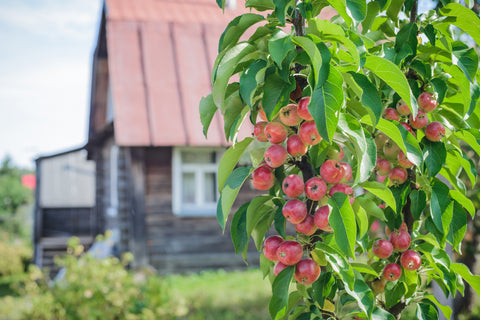
North Pole Columnar Apple Tree
If making warm apple cider in autumn sounds like a dream, you’ll love the North Pole Columnar. This large red apple is similar to a McIntosh and is perfect for making cider, baking, and eating. It ripens in late August or early September, meaning your fall days will be full of scrumptious pies and fresh fruit!
It can pollinate with any of the following varieties: Golden Sentinel Columnar Apple Trees, Scarlet Sentinel Columnar Apple Trees, Liberty Apple Trees, McIntosh Apple Trees, and Yellow Transparent Apple Trees.
Golden Treat Columnar Apple Tree
These greenish-gold apples are tart in early fall, but they get sweeter the longer they are on the tree! If you love a tart variety, pick them once they’ve ripened or wait a little longer for that sweet, juicy taste. No matter your preference, this lovely golden color will brighten up your yard. They taste great in baking or even on a cheese plate.
Cross pollinate with these varieties: Tasty Red Columnar Apple Trees, Blushing Delight Columnar Apple Trees, Ambrosia Apple Trees, Buckeye Gala Apple Trees, and Braeburn Apple Trees.

Scarlet Sentinel Columnar Apple Tree
Scarlet Sentinel apples are large and yellow with a red blush. They differ from the Blushing Delight with their juicy, sweet apples that stay ripe longer. They also produce white flowers in spring. This apple will ripen in mid-to-late summer, meaning you get fresh apples before fall. This tree is also one of the more compact varieties in the columnar category.
It pollinates best with Golden Sentinel Columnar Apple Trees.

Tangy Green Columnar Apple Tree
It’s right in the name! The Tangy Green's apples are the color of limes, and they taste crisp and tart. These apples resemble Granny Smith apples in flavor and color, and they ripen in early to mid-season. Eat it fresh off the tree or add it to your favorite apple recipe!
This tree pollinates well with the following: Tasty Red Columnar Apple Trees, Starkspur UltraMac Apple Trees, SnowSweet Apple Trees, and SnappyMac Apple Trees.

Golden Sentinel Columnar Apple Tree
This large yellow fruit is good for eating and baking. Its flavor resembles the Golden Delicious apple, with a sweet and juicy McIntosh texture. While it ripens around mid-September to October, in spring this tree delivers lovely white flowers on lush green foliage. It’s an excellent variety for applesauce and other baked goods.
For cross-pollination, be sure to plant one or more of these trees with it: Scarlet Sentinel Columnar Apple Trees, Stark Golden Delicious Apple Trees, Gala Apple Trees, CrimsonCrisp Apple Trees, and Franklin Cider Apple Trees.
Why Choose a Columnar Apple Tree?
If you’ve always dreamt of your own apple orchard but you don’t have the space, columnar apple trees offer you a variety of delicious fruits while being pint-sized. And since they require cross-pollinators, you can create a garden of different-flavored apples so that your seasons are full of fresh fruits ranging from sweet to tart.
Whether you live in a city or just want to spruce up your patio with plants, columnar apple trees give you the perks of an apple orchard of your own without taking up acres of yard space. All you need is a container or a small strip of land, and you can enjoy fresh fruit picked from the comfort of your backyard.
Shop our full selection of small apple trees now, and get started on your very own fruit farm today!

Written by
Elizabeth Durham
Though cursed at birth with a black thumb, Elizabeth always dreamed of being a plant person. Turns out she just needed a little guidance—now she’s the proud mama of nearly a dozen house plants! After joining FastGrowingTrees.com as a Content Strategist, she’s expanded her knowledge tenfold and learned how to keep her plants alive…most of the time.
As a newbie in the plant world, Elizabeth understands the struggles of beginner gardeners. And as an experienced writer, she loves creating content that makes difficult concepts easy to understand. In her free time, she enjoys immersing herself in nature through daily lunchtime walks, weekend hikes, and visits to the park with her dog Fred.
Featured Product

Thuja Green Giant Arborvitae
2802 reviewsStarting at $19.95






